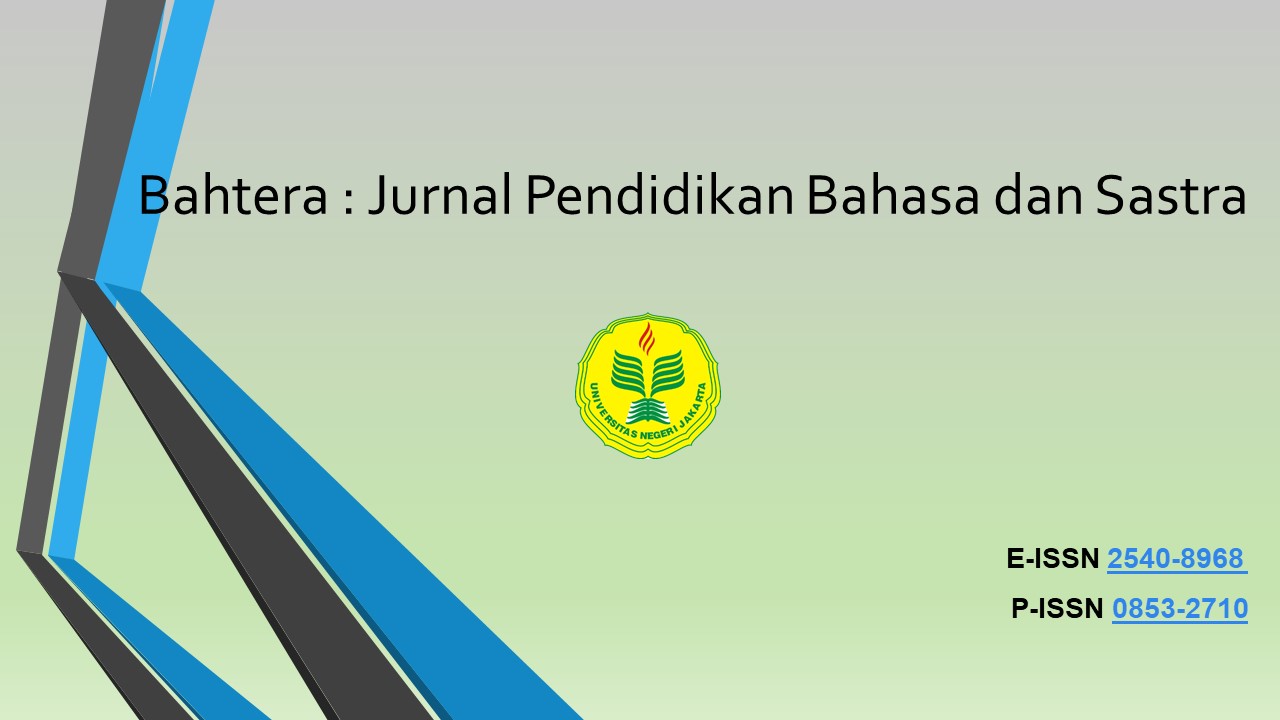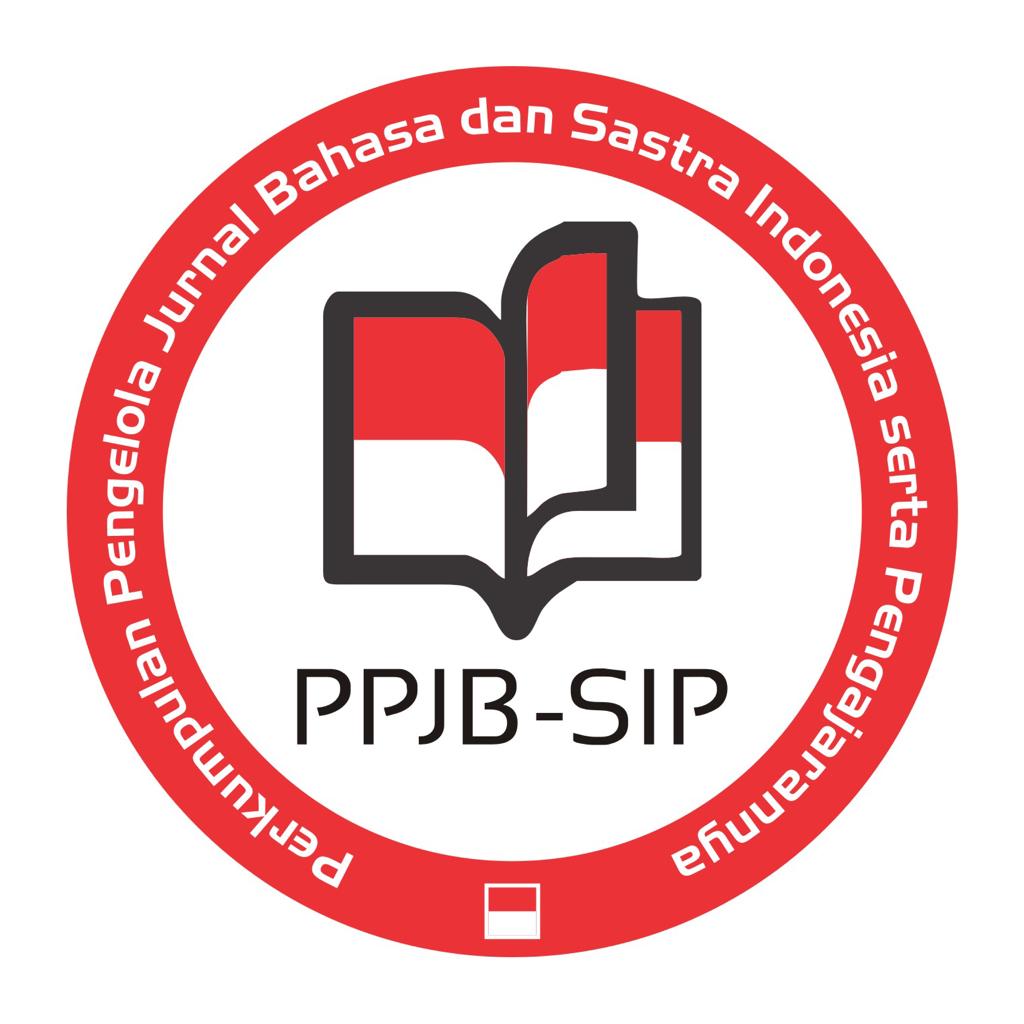TEACHING METHOD INVESTIGATION OF LI YANG’S CRAZY ENGLISH
DOI:
https://doi.org/10.21009/bahtera.212.06Keywords:
Approach, Communicative Competence, Designer Methods, English Teaching, StrategyAbstract
Calls for more holistic research, especially ones that deal with English teaching and learning have increased in recent years. Through critical literature review, this study examines Li Yang’s crazy English, as a trend of English teaching in China. More specifically, it aims to discuss whether Li Yang’s crazy English is one of the “designer” methods and will produce proficient English speakers by proposing two research questions: (1) what is the nature of the “designer” methods? and (2) what specific strategies and what approach to foreign language teaching have the potential to improve learners’ communicative competence in Li Yang’s teaching method? The data have been analyzed and it is found that Li Yang’s crazy English can be categorized as one of the “designers” methods, which is, Total Physical Response (TPR) and failed to build learners’ communicative competence as the ultimate goal of foreign language teaching. The study recommends, therefore, the use of communicative approach in English teaching and learning processes to produce proficient English speakers
References
Davis, G.M., & Fan, W. (2016). English vocabulary acquisition through songs in Chinese kindergarten students. Chinese Journal of Applied Linguistics, 39(1), 59-71. https://doi.org/10.1515/cjal-2016-0004
Dos Santos, L.M. (2020). Communicative language teaching approach in language classrooms. Journal of Education and e-Learning Research, 7(2), 104-109.
Han, Y.L. (2018). The promotion of English in East Asia at the turn of the 21st century: A politico-economic and socio-cultural review. Journal of Pan Pasific Association of Applied Linguistics, 22(1), 1-17. https://doi.org/10.25256/PAAL.22.1.1
Hungyo, E. (2015). A study of language learning strategies used by business students at Asia-Pacific international university, Thailand. Catalyst, 12(2), 85-93.
Ibrahim, M.K. (2017). Communicative English language teaching in Egypt: Classroom practice and challenges. Issues in Educational Research, 27(2), 285-313.
Juanggo, W. (2017). The concept of L2 user and the goals of second language learning. Jurnal Studi Komunikasi (Indonesian Journal of Communications Studies), 1(2). https://doi.org/10.25139/jsk.v1i2.142
Kirkpatrick, A. (2014). English in Southeast Asia: Pedagogical and policy implications. World Englishes, 33 (4), 1-13.
Kuang, Y. “Creating a Curriculum for Preschool Educator in Asia: How to Teach Kindergarteners Speaking and Listening Skills in English through Games” (2017). The University of San Fransisco: ElectronicThesis. Retrieved June 7, 2021, from https://repository.usfca.edu/capstone/494.
Leong, M.L. & Ahmadi, S.M. (2017). An analysis of factors influencing leaners’ English speaking skill. International Journal of Research in English Education, 2(1), 34-41. https://doi.org/10.18869/acadpub.ijree.2.1.34
Ly, S., Chea,T., & Sou, V. (2011). Guided individual learning center: A non classroom learning environment. In R. Stroupe & K. Kimura, English language teaching practice in Asia. Retrieved July 10, 2021, from http://www.leia.org/LEiA/LEiA%20VOLUMES/Download/ELT_Practice_in_Asia.pdf.
Macternan, R.E. “A Critical Discourse Analysis of Li Yang’s Crazy English: Perspectives on English Education in China” (2013). Electronic Thesis. Retrieved May 20, 2022, from http://d-scholarship.pitt.edu.
Mendoza, G.I. "Exploring Gesturing as a Natural Approach to Impact Stages of Second Language Development: A Multiple Baseline, Single Case Study of a Head Start Child" (2016). Electronic Theses and Dissertations. Paper 3121. Retrieved July 12, 2021, from https://dc.etsu.edu/etd/ 3121.
Nakamura, Y. (2016). Globalization, English language education, and language policy in Asia and Japan. Language, Culture, and Communication, 48, 117-127.
Nuraeni, C. (2019). Using total physical response (TPR) method on young learners English language teaching. Metathesis:Journal of English Language Literature and Teaching, 3, 26-34. https://doi.org/10.31002/metathesis. V3i1.1223
Pillai, N.V. Research methodology: literature review. Retrieved March 5, 2021, from
https://www.researcgate.net/publication/339716552.
Paré, G., & Kitsiou, S. (2017). Methods for literature reviews. In F. Lau & C. Kuziemsky, Handbook of ehealth evaluation: An evidence-based approach. Retrieved August, 10, 2021, from https://www.ncbi.nlm.nih.gov/books/NBK481583/.
Rombe, S. (2017). Communicative language teaching. English Education 5(2), 54–66.
Setiawan, W.A., & Kuswandono, P. (2020). Review of teachers professional development research studies in southeast asia. International Journal of Pedagogy and Teacher Education 4(1), 19-32. https://dx.doi.org/10.20961/ijpte.v4i1.33686
Snyder,H. (2019). Literature review as a research methodology: An overview and guidelines. Journal of Business Research 104(2019), 333–339
Downloads
Published
How to Cite
Issue
Section
License
License & Copyright
This work is licensed under a Creative Commons Attribution 4.0 International License.










